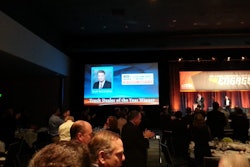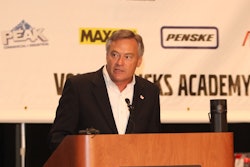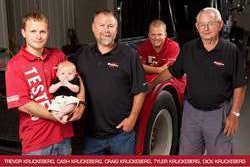More than 36 months removed from some of the toughest economic conditions the aftermarket has seen in a generation, trade winds have started to blow in favorable directions.
Truck sales from 2006 and 2007 were at record levels and those units are now reaching a historically good timeframe for aftermarket services.
From the two years leading through 2007, Class 8 truck sales reached records heights, combining for 537,000 units.
According to John Blodgett, vice president of sales and marketing for MacKay and Company, the highest annual parts demand comes in years seven through nine, which puts the aftermarket currently in the “sweet spot.”
MacKay and Company estimated the 2014 aftermarket as a $26.19 billion business. That growth trend is expected to climb to at least the end of this decade when it is expected to reach nearly $32.5 billion.
As of 2014, there were 2.9 million Class 8 trucks on the roads, nearly double the 1.5 million registered in 1994. Class 6 and 7 trucks have actually decreased marginally; down 130,000 units in the same 20 year span, according to MacKay and Company.
Among the major changes taking place in the aftermarket is the proliferation of OE captive engines.
According to a MacKay and Company study, in 1986, Detroit (35 percent), Cummins (48 percent) and Caterpillar (17 percent) fought over marketshare in Freightliner trucks.
However, now that Daimler has acquired Detroit, it was the engine of choice for 2014, with 74 percent share in Freightliners last model year.
In 1986 Caterpillar had at least a part of the market in each nameplate, but that has dropped to zero with their exit of the market. That leaves only Cummins to duke it out with every major truck North American truck OE.
Now, it’s either captive or it’s Cummins.
Cummins owns at least 60 percent share in International, Kenworth and Peterbilt as of 2014, but makes up only 8 percent for Mack, 26 percent for Freightliner and 18 percent for Volvo.
Truck age hit another record high in 2014, registering 9.74 years, according to MacKay and Company – another positive for the aftermarket.
Parts are also lasting longer, with all wearable parts lasting more miles than ever before. For example, a well-maintained diesel engine can now go upwards of 770,000 miles before a teardown, according to a MacKay and Company study. That’s up from just more than 275,000 30 years earlier.
Among the not-so-great news, the health of medium duty market has not endured.
“The medium duty truck universe has not grown in 40 years,” says Stu MacKay, president of MacKay and Company, “but the overall universe has more than tripled.”
Losses in lease and rental and for-hire services have helped drag down the Class 6 and 7 truck population, even though the construction segment posted a 5 percent gain alone.
Still gains in the Class 8 segment have by far offset any loses from medium-duty, and that still spells great news for the aftermarket looking forward.
A rising tide floats all boats and it certainly looks like a good tidal trend for the foreseeable future.










